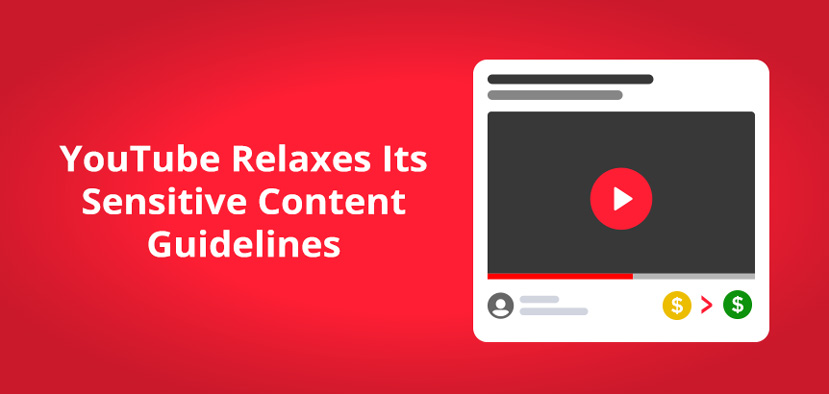YouTube Relaxes Its Control Over No-Filter Content
September 28, 2023
2 min 10 sec read
Okay, some of us believe we can pretty much say what we want (and we can, right?), but many social media sites like to put a muzzle on it. YouTube was one. And, let's face it, they took it to another level. Many creators were slightly annoyed that they'd get "warnings" for mentioning a topic that YouTube deemed controversial. Come on, a little controversy never hurt anyone.

But guess what? YouTube has just updated its
"Advertiser-Friendly" content guidelines to allow creators to address such controversial topics as sexual and domestic abuse, eating disorders, abortions, and other topics that are considered sensitive.
Of course, they stipulate that while coverage of these topics is cool, it all depends on how they are presented. For instance, you can talk about sensitive topics as long as it isn't too graphic. It's still up to the platform to decide what's "too graphic."
In the past, YouTube has frowned on what it deemed inappropriate, mostly so they didn't scare advertisers away, but creators have always been a little annoyed by the platform's policies on the matter. Let's face it, none of us wants a muzzle put on us by the gatekeepers.
Creators have put pressure on YouTube, complaining that their content has gotten more yellow icons when their content simply makes a light reference to something deemed "sensitive." The dreaded yellow icon, of course, means your video will be eligible for limited or no ads.
YouTube hopes the update to its guidelines will allow more creators to broach controversial topics for educational purposes and still be able to get those ad dollars. Ironically, the new guidelines themselves might be controversial because some folks fear it will encourage the presentation of "inappropriate" material.
There are some slippery slopes and gray areas, though. You know there are. YouTube is relaxing its grip while still trying to maintain a balance. It's not going to be the Wild West.
The platform says it will align its "Advertiser-Friendly Content" guidelines on eating disorders with the current community guidelines.
For instance, content that focuses on eating disorders and presents triggers won't be eligible for ad revenue. On the other hand, content that mentions "eating disorders" and doesn't promote it is cool. You can still monetize it. This includes educational stuff, documentaries, and stories by survivors. The problem is, somebody on YouTube will still be monitoring it, so the decision about what's okay and what isn't will still be subjective.
YouTube is warning brands to be careful when making decisions about where to put their ads, stating that they should consider whether or not they want their products and services promoted in association with content that discusses controversial stuff.
A YouTube spokesperson added: "This change will ensure that this content isn't incentivized with ads and that our monetization and community guidelines continue to be in sync."
That's probably a good idea in a climate where "cancel culture" is a real thing. Let's face it: if you say or do something people don't like, they want to erase you like a bad drawing.
So, at the end of the day, YouTube is trying to give its creators a little bit of breathing room while keeping advertisers happy. It's a balancing act that more and more companies face these days.
Want to read this in Spanish?
Spanish Version >>
